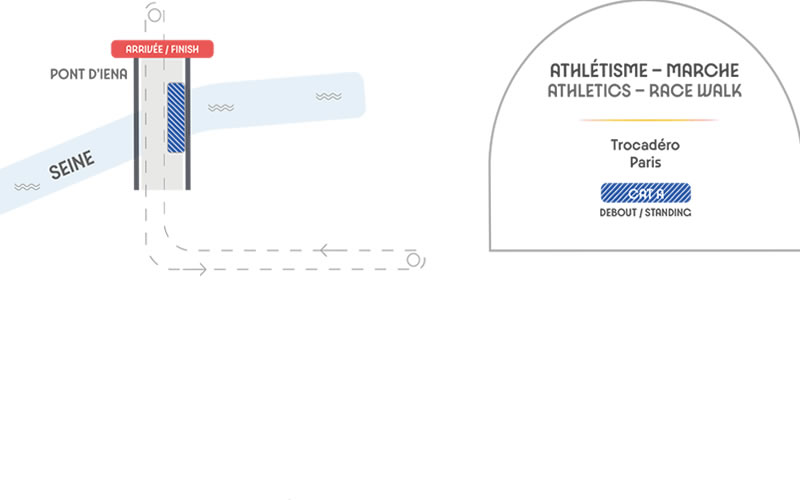ATW01 M/W - 20km race walk finals - Summer Olympics - Paris Olympic 2024 Olympic Athletics Race Walk Tickets

Pont d lena - Athletics Race Walk
Olympic Athletic Race Walk
Olympic Athletic Race Walk is a distinctive and demanding discipline in track and field athletics that tests not only endurance but also technique and discipline. Known for its unique walking style and rigorous judging, race walking has been part of the modern Olympic Games since 1904 for men, with women’s events added in 1992. It is one of the longest-distance events in athletics and one of the most technically challenging.
What sets race walking apart is its strict form: athletes must always have one foot in contact with the ground, and the advancing leg must straighten from the moment of contact until it passes under the body. This technique is closely monitored by judges positioned along the course. Athletes who fail to maintain proper form risk receiving penalties or disqualification, making race walking as much about control as it is about speed.
The Olympic race walking events typically include two main distances: the 20 km race walk for both men and women, and in past years, a 50 km race walk for men. However, the 50 km event was replaced by a mixed team race walking event starting from Paris 2024, to encourage gender equality and modernize the sport.
Race walkers compete over road circuits often set through scenic or urban backdrops, adding visual appeal for both live spectators and television audiences. Despite the unusual gait, the pace is fast—elite athletes can finish a 20 km race in under 1 hour and 20 minutes.
Countries such as Russia, China, Spain, Japan, Italy, and Australia have traditionally been strong in race walking, producing Olympic champions and world record holders. Legendary figures like Robert Korzeniowski of Poland and Liu Hong of China have left lasting legacies with their exceptional performances and sportsmanship.
Olympic race walking continues to evolve, with greater emphasis on fairness, innovation, and broader participation. The introduction of mixed-gender events signals a progressive step for the sport, drawing attention to its high-level athleticism and strategic depth.
As a test of endurance, technique, and mental toughness, race walking is a truly Olympic challenge. It may not involve sprints or jumps, but its unique style and demand for flawless execution make it a compelling and often underappreciated showcase of human capability and perseverance.
